Collection
Historical Devices Owned by the Audio Communication Group, Technische Universität Berlin

Collection Items
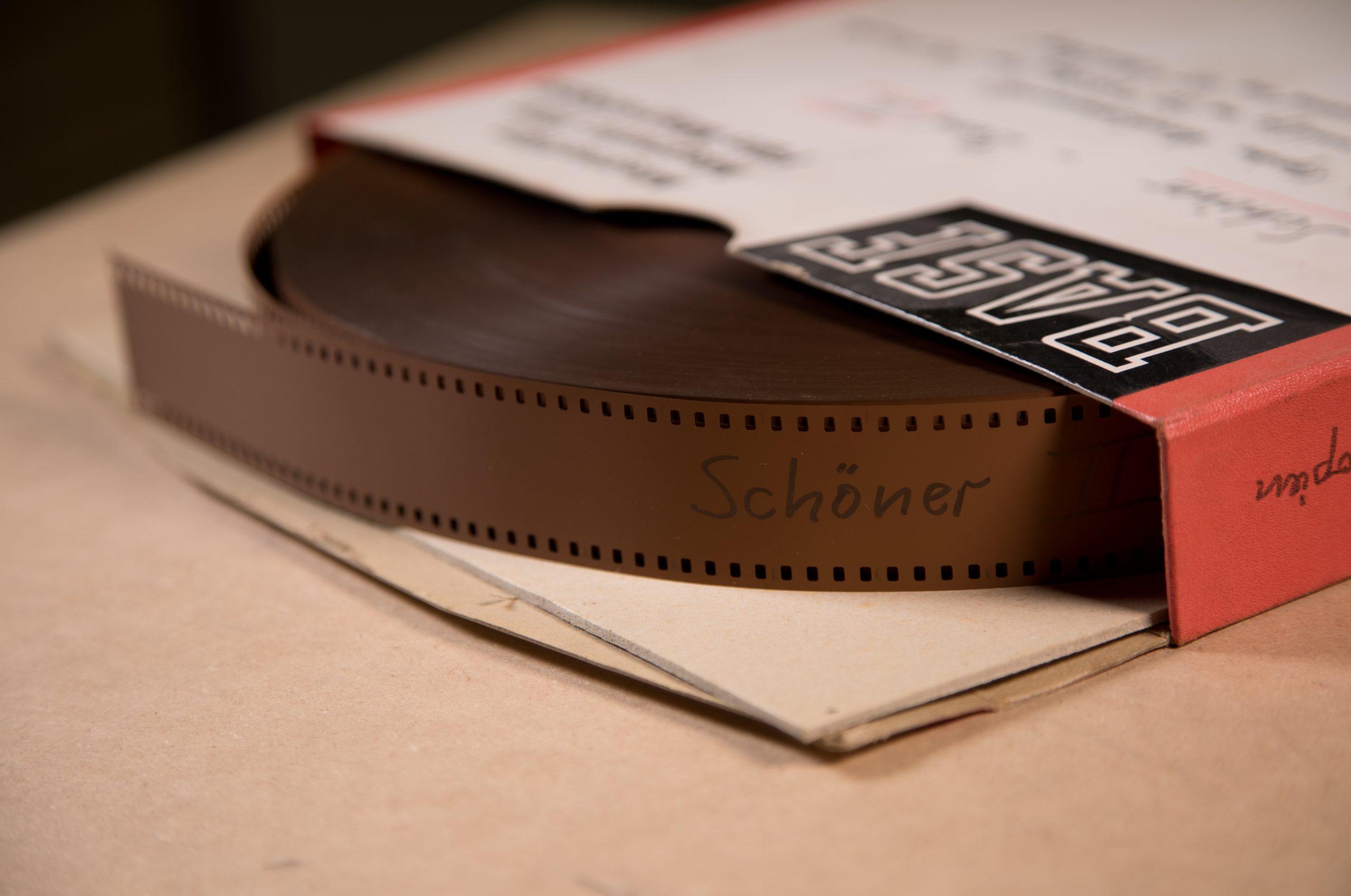
35 mm 4-track tape Artefacts
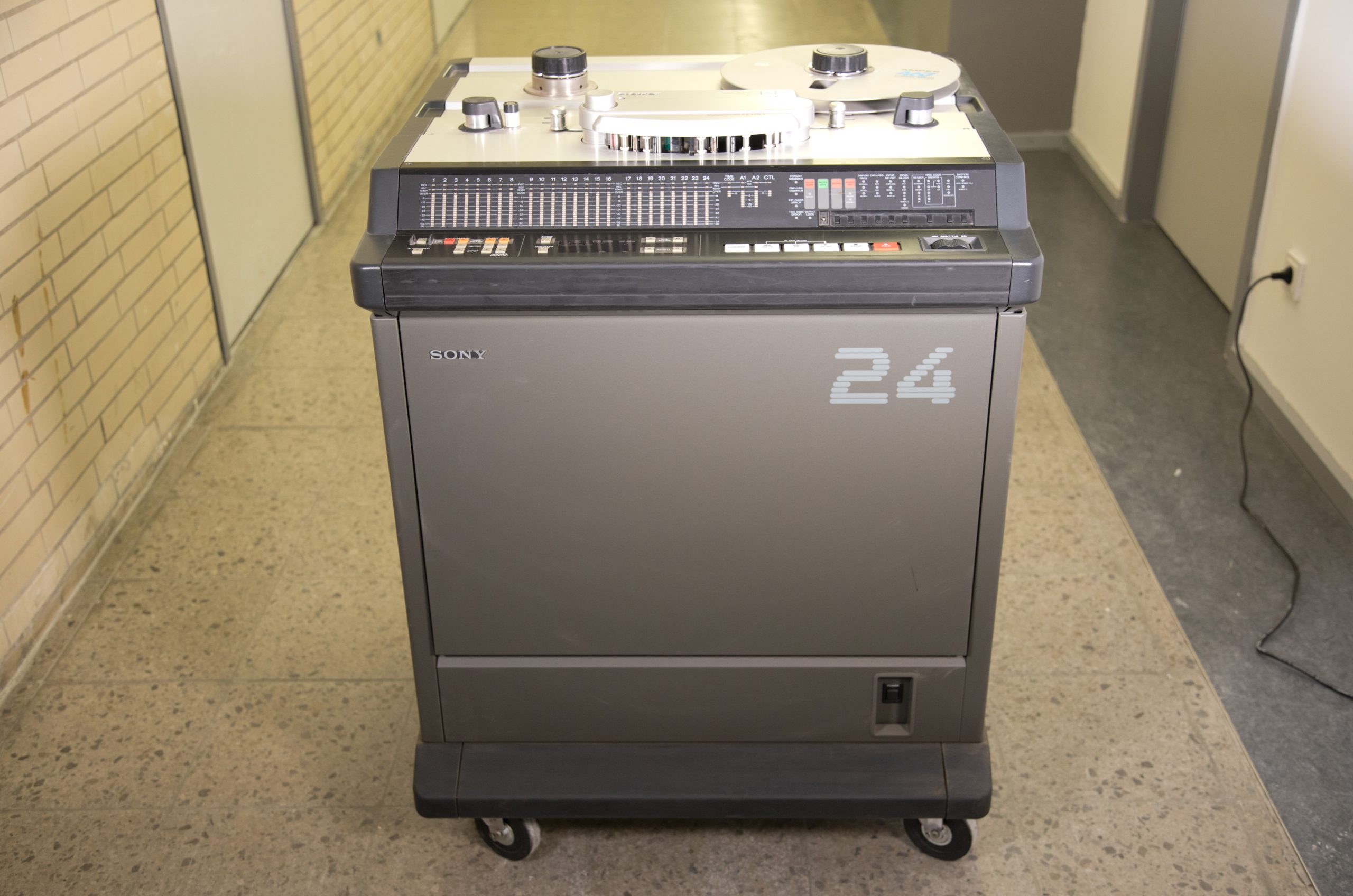
Sony PCM 3324S digital 24-track tape recorder Artefacts
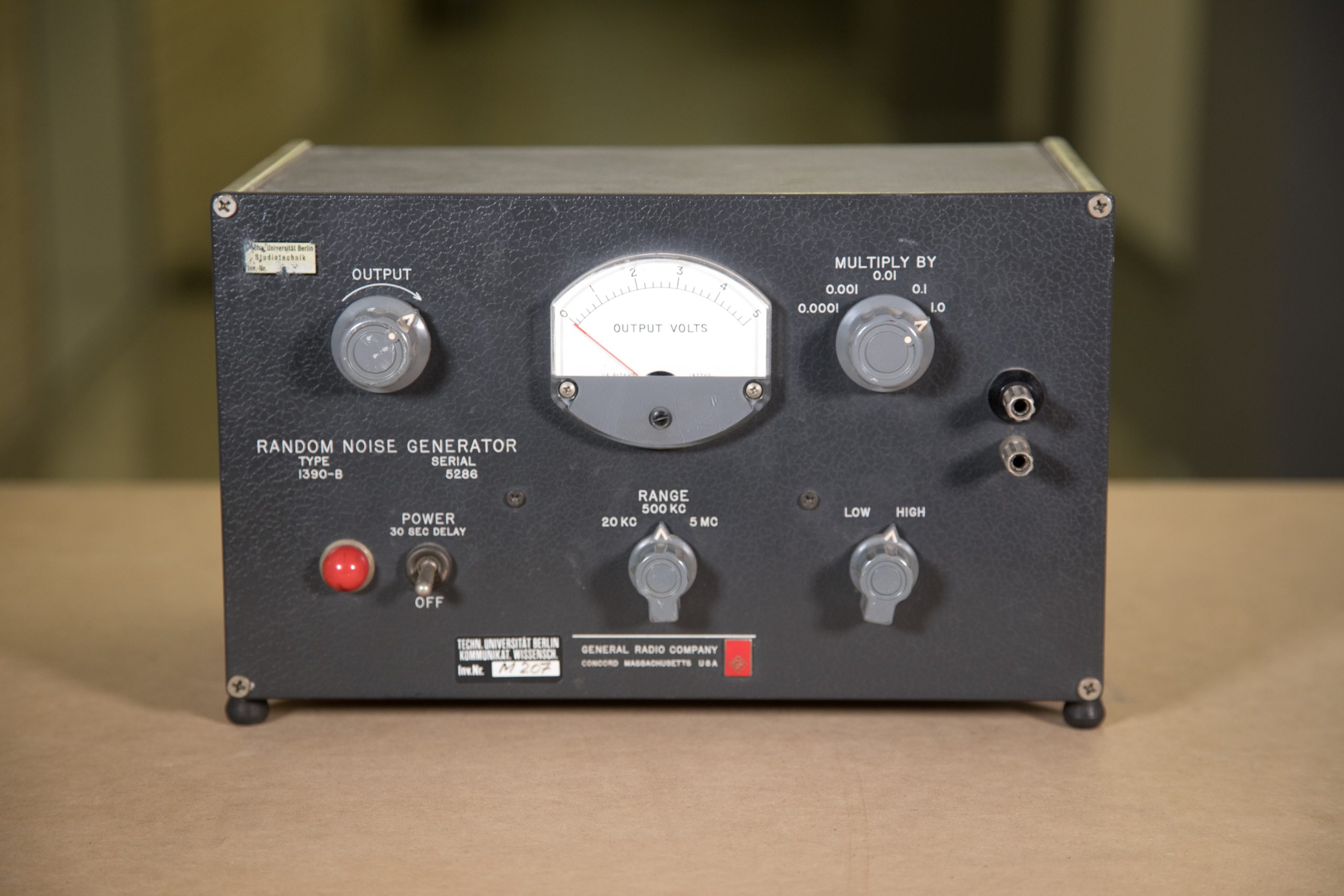
Random Noise Generator Type 1390-B Artefacts
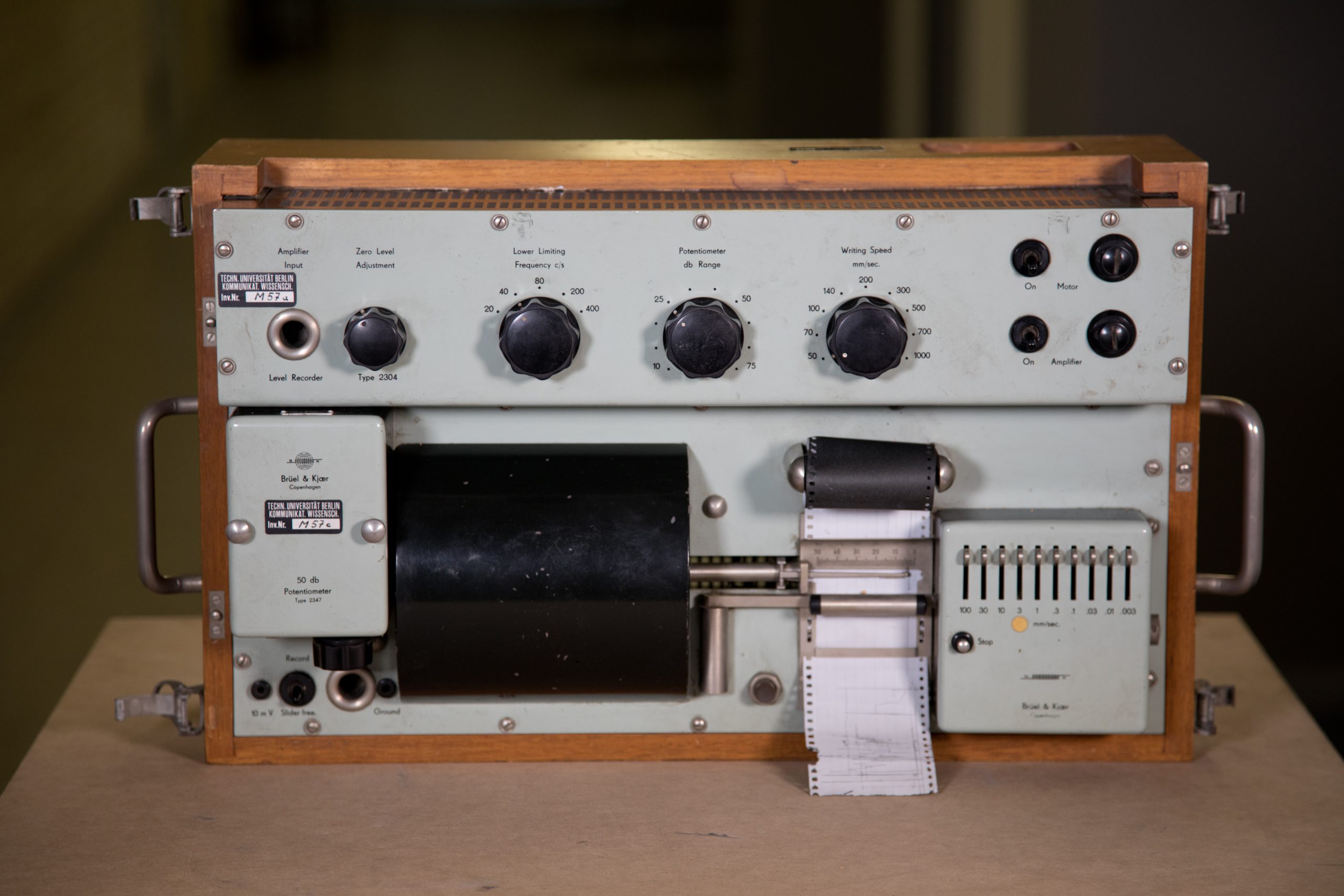
Brüel & Kjær 2304 level recorder Artefacts
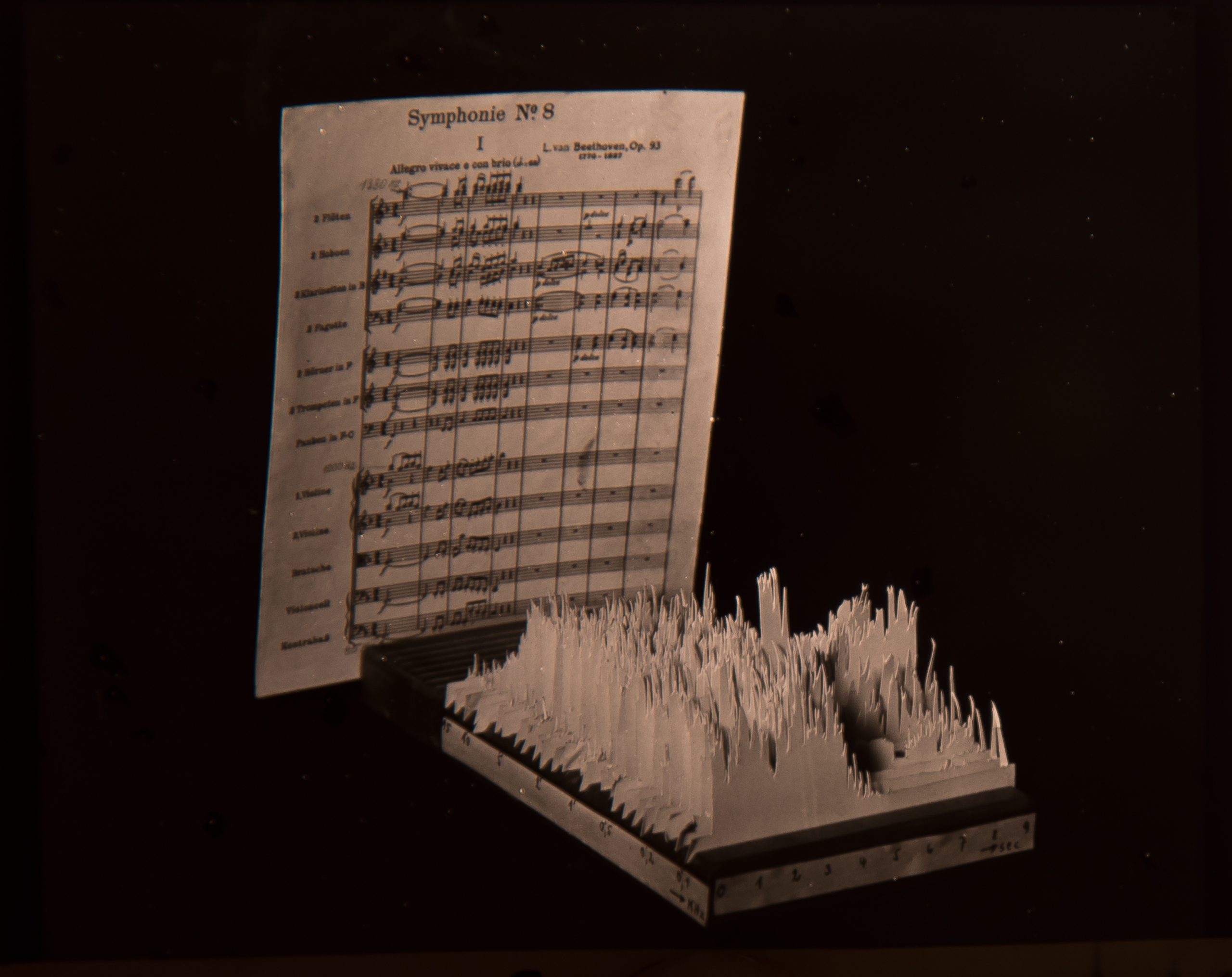
Handmade paper waterfall plot: Beethoven’s 8th symphony Artefacts
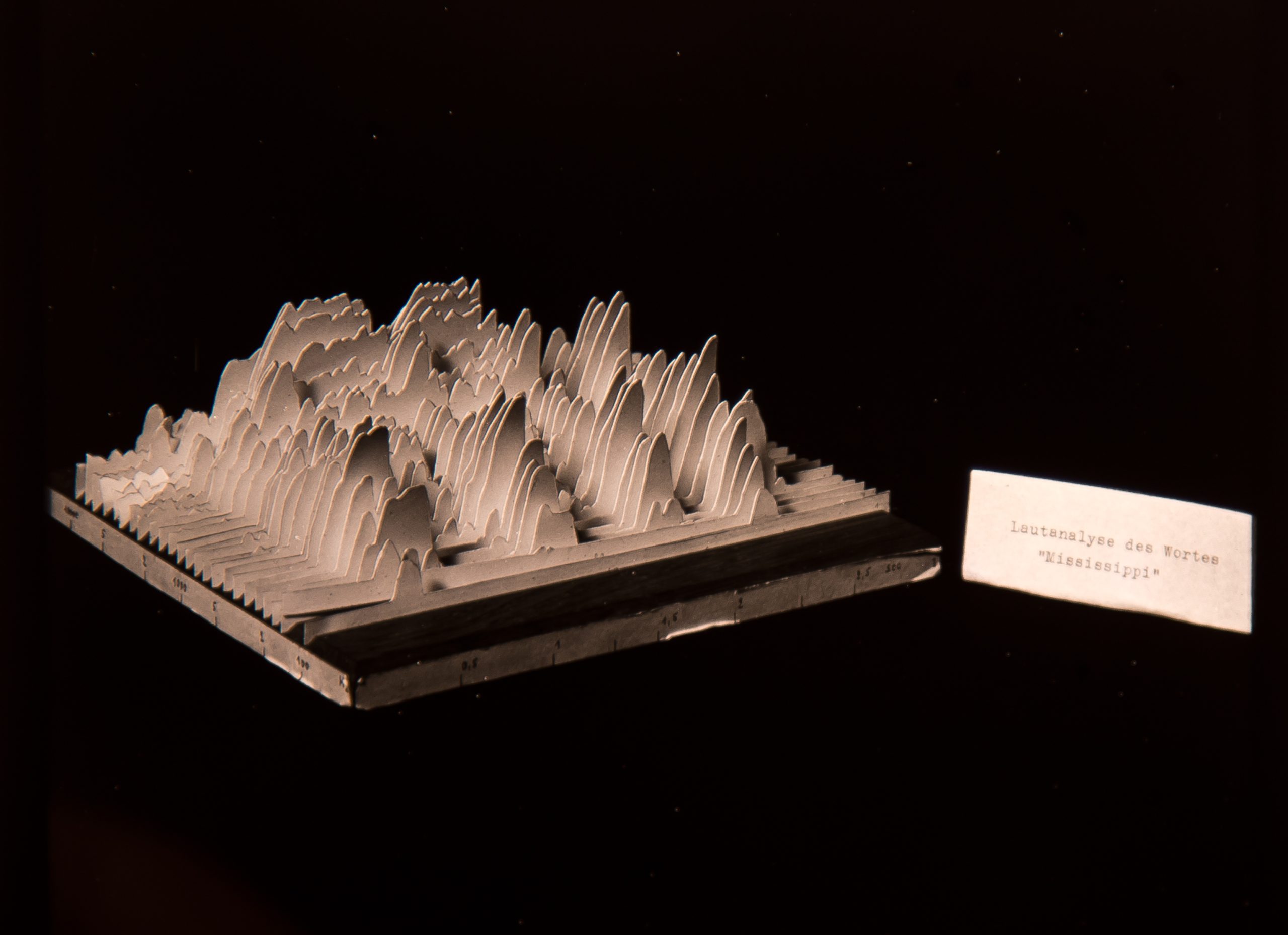
Handmade paper waterfall plot: Mississippi Artefacts
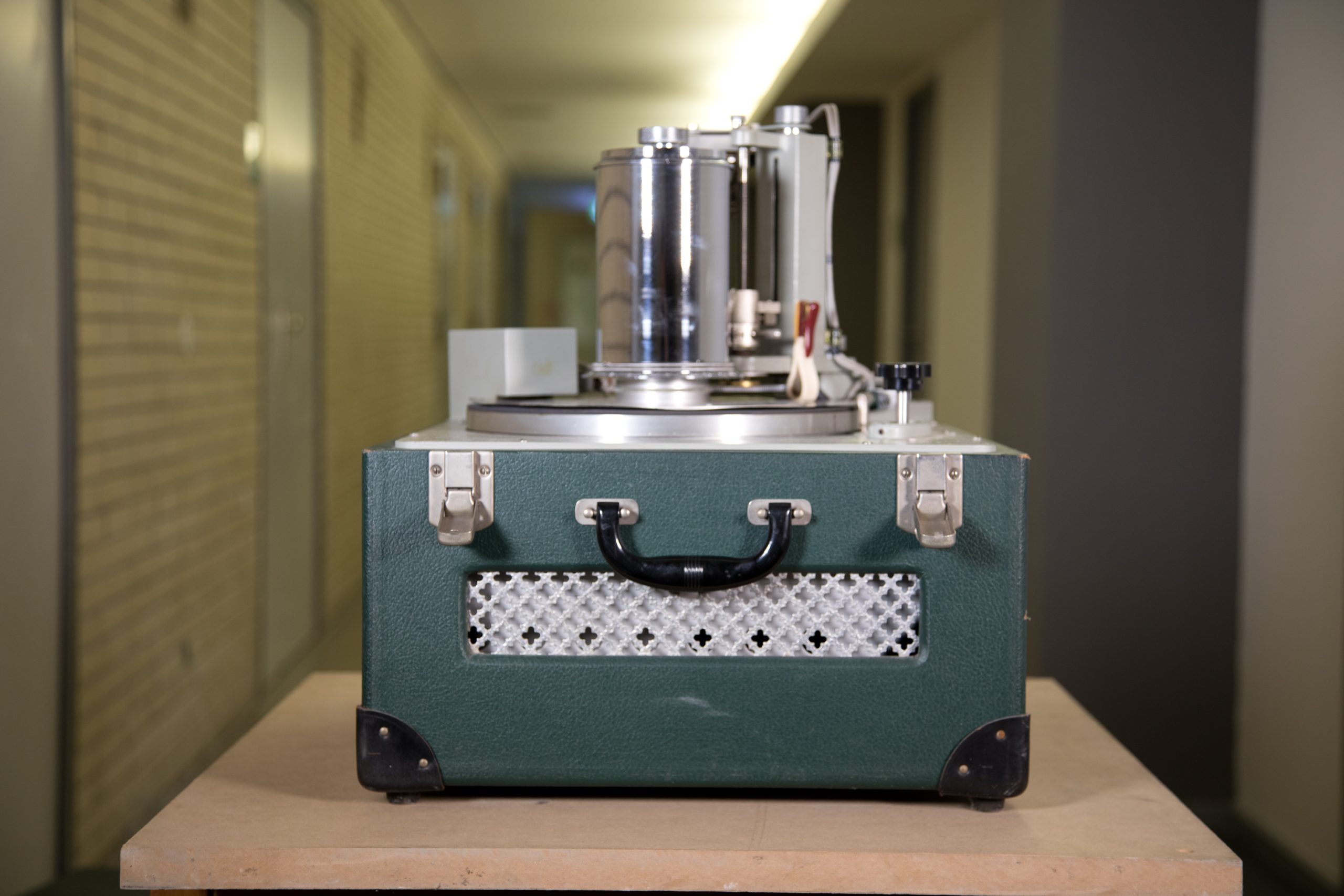
Kay Sona-Graph Artefacts
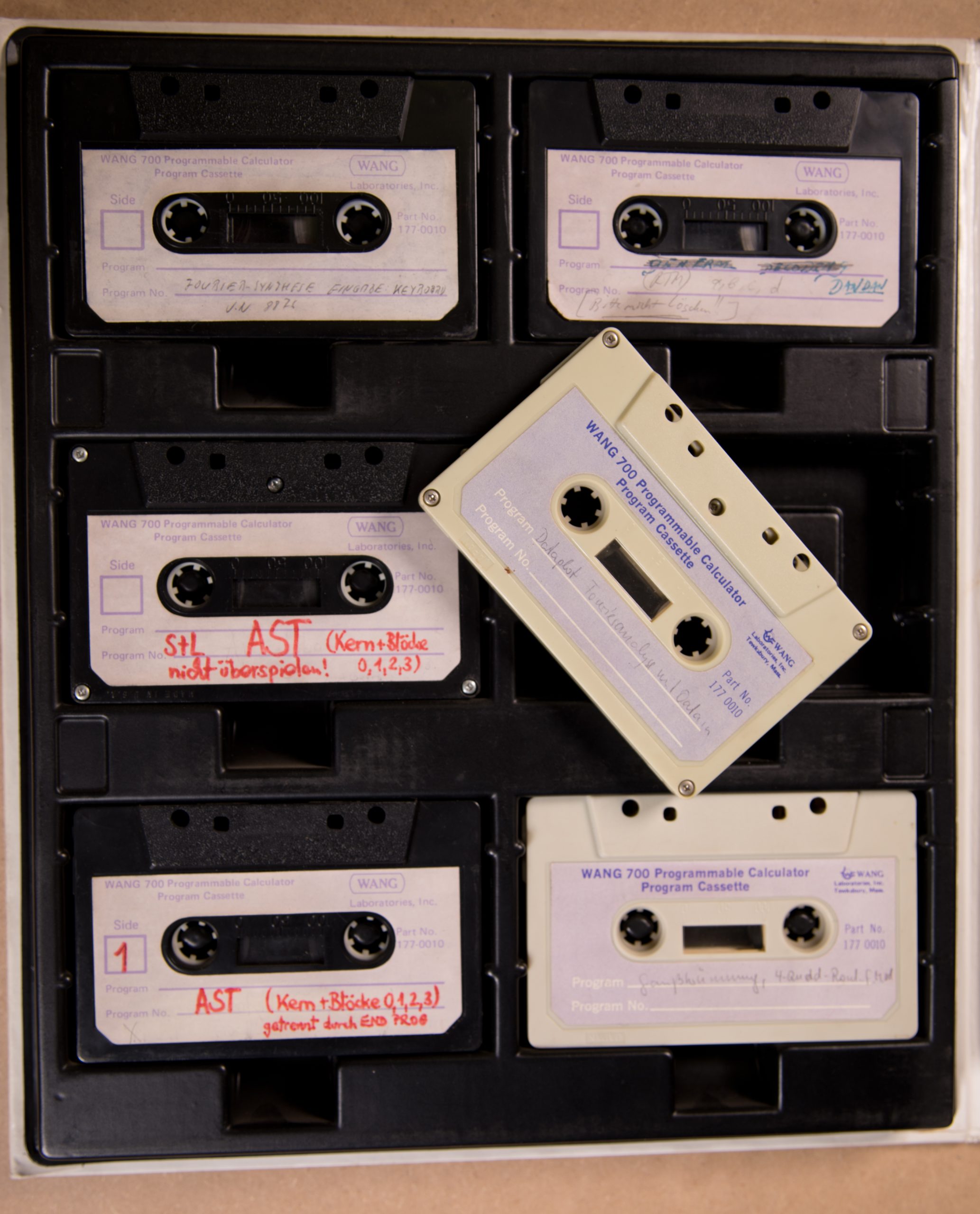
Program cassettes Artefacts
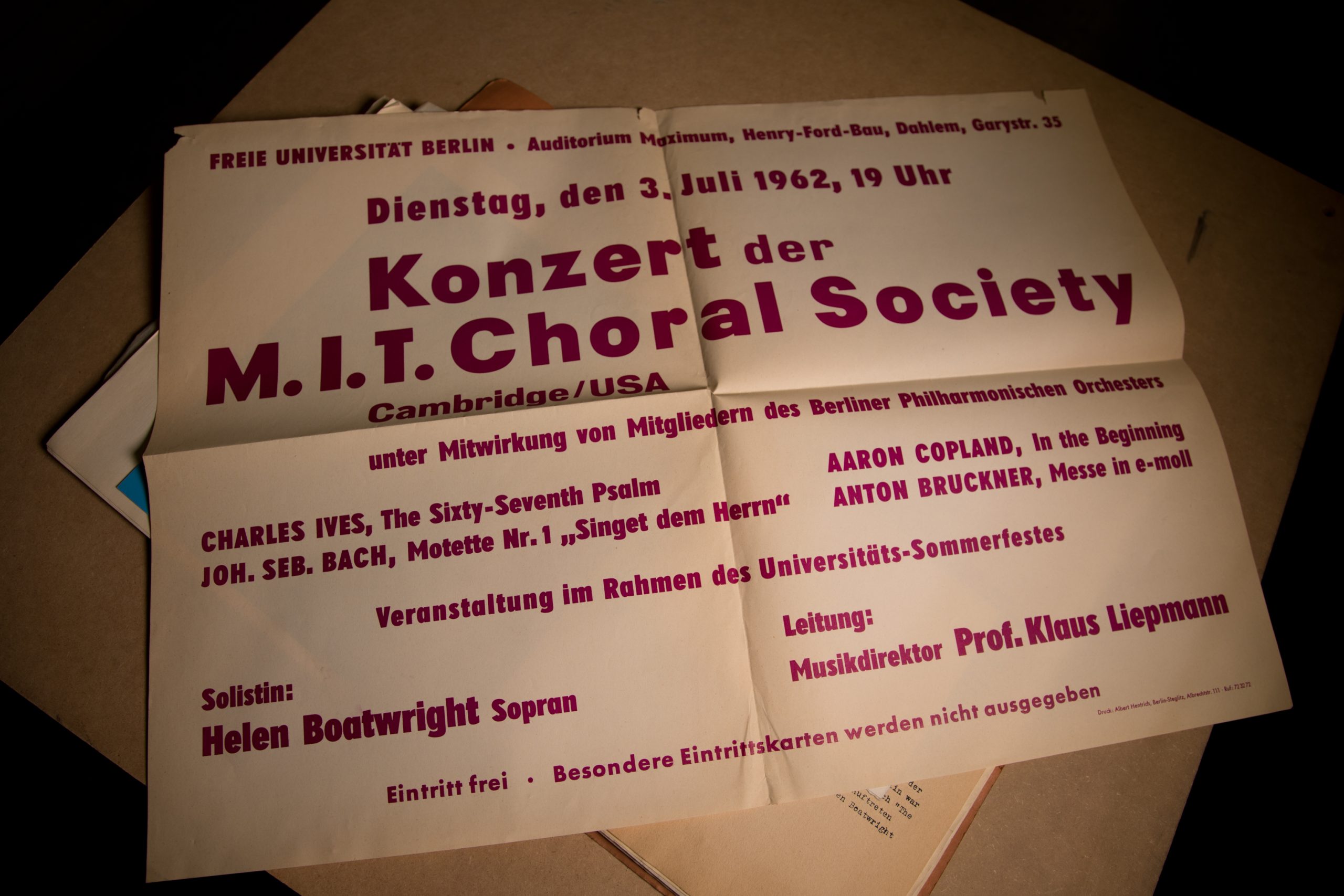
MIT Choral Society concert poster, Freie Universität Berlin, 1962 Artefacts
Historical Devices Owned by the Audio Communication Group, Technische Universität Berlin
written by Nikita Braguinski
The holdings of the Audio Communication Group of the Technische Universität Berlin (TU) go back to the 1950s and 1960s. This is a considerable length of time, given the speed of developments in audio technology, which has advanced from analog to digital formats and is now increasingly encompassing algorithmic approaches. The devices I will describe here, now kept in a TU basement, are no longer used in research, teaching, or music, and are not accessible to visitors. Yet they tell the story of recent developments in audio technology as it was transformed along with the changing requirements of engineers, teachers, and sound artists, and, not least, show that the history of the group and its electronic music studio was shaped by both acousticians and sound artists, including Hans Heinz Stuckenschmidt, Fritz Winckel, Boris Blacher, and Folkmar Hein. [1]
The Audio Communication Group currently focuses on developing new sound-reproducing technologies, including 3D sound and the virtual recreation of acoustic environments. The group also hosts the TU master’s program in audio communication and technology, and the technology elements of the sound engineering program at the Universität der Künste Berlin. In previous decades, too, the forerunner of the Audio Communication Group was closely involved in artistic work. This aspect of the Group’s history is described in Musik…, verwandelt: Das Elektronische Studio der TU Berlin 1953–1995. The book mentions some of the items presented in “Sound & Science: Digital Histories,” which link the practices of composers who previously worked in the Group’s electronic music studio to wider developments in audio technology. Other items illustrate the shared technological and conceptual space of teaching, engineering, and sound art since the 1960s.
Historically, one of the Group’s most visible projects was the creation of the novel technical solutions behind artistic sound projects during the Expo ’70 world fair in Osaka, Japan. These included the use of 35 mm multitrack audio tape, particularly closely connected with the artistic practices and needs of composers of electroacoustic music working on the exhibition. It enabled them not only to play back several independent tracks of audio at once, but also to automatically vary the spatial placement of sound sources inside the German pavilion’s spherical auditorium. Today, the Audio Communication Group owns a number of tapes in this format, which was modeled on the technology traditionally employed in film. Like professional 35 mm wide film, 35 mm audio tape is perforated on both sides. However, instead of storing an array of projectable frames, it is coated with magnetic material that enables sound recording.
The Audio Communication Group’s collection captures the evolution of recording technology over the two decades after Expo ’70, exemplified by the tape recorder Sony PCM 3324S, produced around 1992. This reel-to-reel tape machine can store up to twenty-four channels of sound, facilitating the extensive editing and mixing that became typical of modern studio production with the advent of multitrack technology. Sound is stored in digital format, which means that exact copies of individual tracks can be produced without introducing additional background noise and distortion.
In the second half of the twentieth century, both artistic and engineering work with audio depended on the ability to create clearly defined signals by technical means. The General Radio Company Random Noise Generator Type 1390-B (ca. 1965) belongs to this category of devices. A tool for creating standardized levels of noise for the purposes of measurement and experimentation, the device’s Operating Instructions list “room acoustic measurements, loudspeaker and microphone tests, psychoacoustic tests,” and many other domains as possible areas of use.
The Group also holds very different examples of sound visualization technologies. The Brüel & Kjær 2304 level recorder (1950s) created visual representations of changes in volume and other measurable variables; when connected to external measuring and filtering instruments, it could be used in a laboratory setting to carry out specialized measurements. A more unusual form of representing sound that built upon the use of a level recorder is the paper “waterfall plot,” a handmade three-dimensional model. Photographs of these plots have survived in a subset of the Audio Communication Group’s collection: historical glass slides used in teaching at the TU during the 1960s [2],[3]. The Kay Electric Company Sona-Graph (1960s) enabled the automatic creation of two-dimensional representations of the sound spectrum that carried the same information as the far more labor-intensive paper waterfall plots. The Sona-Graph’s sound spectrograms show the distribution of energy across the acoustic spectrum. The acoustics department of the Technische Universität Berlin acquired a Kay Sona-Graph, possibly the one now owned by the group or a comparable model, in 1963 as part of a project led by Prof. Fritz Winckel.
The collection’s compact cassettes exemplify the Group’s early attempts to introduce computational approaches into its work with sound. Holding computer programs and data pertaining to digital audio,[4] they illustrate the use of audio signals to transport computer-readable information.
As well as documenting the development of audio technologies, the Group’s collection sheds light on their broader cultural context and more specifically on the TU’s institutional contacts. An MIT Choral Society poster in the technical and organizational correspondence section is an interesting case in point. Advertising a concert at the Freie Universität Berlin on July 3, 1962, it illuminates the historical setting of its time: both the Free University and the Technical University were located in West Berlin, and the Technical University’s audio technology research group maintained close artistic, cultural, and institutional links with research institutions in the United States.
Website of the Audio Communication Group, Technische Universität Berlin
© 2015 – 2025 Humboldt-Universität zu Berlin





